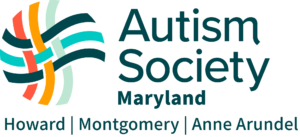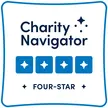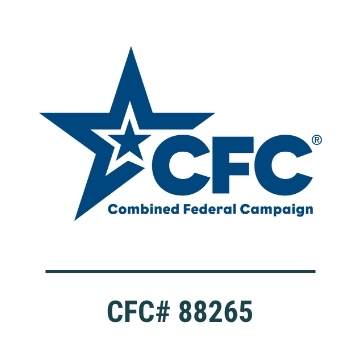If your child wanders away, CALL 911. Don’t delay.
Why call 911 BEFORE anything else? The police have resources they can mobilize to find a critically missing person faster than you can alone. The longer a person is gone, the wider the search area becomes. Seconds make a difference in safely finding a missing loved one and bringing them home! Please spread the message.


Download Flyers:
This is a public service announcement brought to you by the Maryland Autism Coalition: Autism Society of Baltimore Chesapeake, Autism Society of Maryland, Brown on the Spectrum, Charles County Autism & Developmental Disabilities Parent Support Group, Erin’s Star, Ethan Saylor Alliance, Howard County Police Department, Howard County Police Department, Hussman Institute for Autism, Lower Shore Autism Community, Maryland Department of Disabilities, Montgomery County Police – autism/IDD, Alzheimer’s/Dementia Outreach Unit, Pathfinders for Autism, People on the Go of Maryland, The Arc Maryland, The Parents’ Place of Maryland, xMinds-Partnership for Extraordinary Minds. The Autism Society of Maryland is proud to be a part of the Maryland Autism Coalition, working alongside police and other advocacy organizations to address the needs of children and adults with Autism in Maryland.
Virtual Water Safety Workshop - 2025
MCPS is collaborating with the Autism/IDD Montgomery County Police Unit, Autism Society MD, and local swim schools to present water safety information to families and caregivers
This presentation is created to support children with disabilities in and around water
Learn about safety tips, how to respond in an emergency, adapted swim classes, and other free resources!
RSVP BY MARCH 1 2025 for these Dates and Times:
- March 10 at 10:00 AM
- March 10 at 1:00 PM
- March 11 at 6:00 PM
Wandering/Elopement
Wandering is a critical safety concern for many individuals and families in the Autism community. Because of the potentially dangerous outcomes, accidents, injuries or drowning, wandering can be a stressful and anxiety-inducing experience for both the individual and their family.
Those who wander are at increased risk of accidents, injuries, or drowning. Approximately 91% of deaths in children with Autism under 14 are caused by accidental drownings subsequent to wandering.
Stress and anxiety about the potential for wandering can impact daily life and functioning. Not only is constant vigilance, worry or fear emotionally exhausting, it can interfere with a family’s ability or desire to engage in community activities or outings, contributing to social isolation.
Whether you are the parent of a child who has eloped, a family member, educator, provider or part of the greater community, we feel it is imperative know what to do to help prevent wandering or to prevent a tragic outcomes when someone wanders. .
Below are links to resources that you may find helpful.
AUTISM SOCIETY OF AMERICA
Wandering Resource Sheet – An overview of wandering with prevention tips
Living Safely on the Spectrum: An Introduction to Wandering and Prevention Strategies – Introduce family, caregivers, school staff, neighbors, and others to your child or loved one’s risk for wandering
Wandering Letter – Track wandering occurrences to identify triggers (situations, activities, environments, etc.) and make note of common destinations or favorite places
Wandering History – Form to track wandering occurrences, triggers and destinations
IEP Considerations – Tips for how to address wandering in the school setting through IEP accommodations and/or modifications
Emergency Identification Sheet – Provide first responders with detailed information about your child or loved one. File this form with your local emergency service agencies and keep an up-to-date form on file
Safety on the Spectrum: Water and Wandering Program (Web Page) – Learn about the Autism Society of America’s Safety on the Spectrum Water and Wandering Program and download tip sheets, visual supports and social stories in English and Spanish
PATHFINDERS FOR AUTISM
Safety Kits (Web Page) – Compilation of tip sheets, forms, prevention strategies and checklists for wandering as well as links to other safety information
Webinar: When They Wander or Run Away
PFA Tips: When They Wander or Run Away (Web Page) – An overview of wandering with prevention tips
Wandering and Elopement at School (Web Page) – Tools and strategies for partnering with the school to prevent or respond to wandering
Water Safety
91% of deaths in children with Autism under 14 are caused by accidental drownings subsequent to wandering.
Many Autistic children and adults are drawn to water. Learning how to stay afloat, swim and safety rules around water can help prevent tragic consequences. Educating families and caregivers, aquatics and recreational staff, and the general public about the risks of wandering and water, and equipping them with water safety techniques can save lives. Download and review these safety checklists and social stories with your child or loved one. Find a swim lesson program that works with individuals with Autism and other disabilities.
Interested in training for your local pool, aquatics or recreation staff? Contact us at 410-290-3466 or email info@autismsocietymd.org
*updated August 2024
Registries, 911 Flagging Programs & Alert Systems
Several police departments in Maryland offer ways in which persons with disabilities, dementia or mental health challenges and their families/caregivers can connect with law enforcement in advance of an emergency.




















